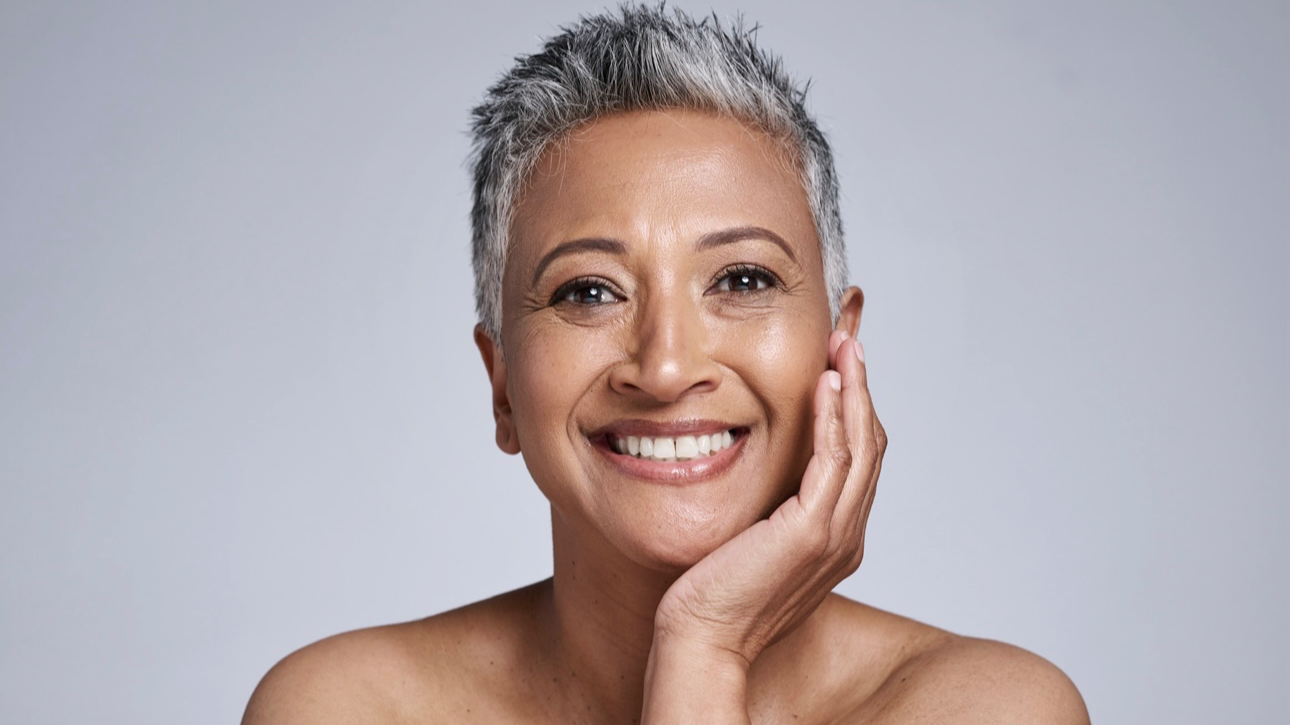Cosmetic Injectables During Menopause: What You Need to Know About Skin Care and Treatments
Menopause is a natural phase in every woman’s life, typically occurring between the ages of 45 and 55. It marks the end of menstruation and comes with a variety of hormonal changes that can affect nearly every aspect of your health—including your skin. Many women notice significant changes in their skin during menopause, including dryness, loss of elasticity, and the appearance of fine lines and wrinkles. As a result, cosmetic injectables have become a popular option for women seeking to maintain a youthful appearance during this time. In this article, we’ll explore how menopause affects your skin and how cosmetic injectables can help you look and feel your best.
How Menopause Affects Your Skin
Menopause triggers a significant drop in estrogen levels, which has a profound impact on your skin’s appearance and texture. Estrogen is essential for maintaining skin’s moisture, thickness, and elasticity. As levels decrease, the following changes are common:
1. Loss of Collagen and Elasticity
Collagen is a protein that gives skin its strength and structure, while elastin allows it to bounce back after stretching. With the decline in estrogen during menopause, collagen production slows down, leading to a reduction in skin thickness and elasticity. This often results in sagging skin and the formation of wrinkles, particularly around the eyes, mouth, and neck.
2. Increased Dryness
Estrogen also plays a role in maintaining skin hydration by promoting the production of natural oils. During menopause, the skin’s ability to retain moisture decreases, leading to dryness, flakiness, and a dull complexion. This dryness can make fine lines and wrinkles more noticeable.
3. Thinning Skin
As collagen production declines, the skin becomes thinner and more fragile. This makes it more susceptible to bruising and can contribute to a more aged appearance. Thin skin is also less able to protect itself from environmental damage, making it important to take extra care with sun protection and moisturizing.
4. Changes in Skin Tone
Hormonal fluctuations during menopause can cause changes in skin pigmentation. Some women may notice the development of age spots, also known as hyperpigmentation, which are often caused by sun exposure combined with the hormonal changes. Additionally, the skin may become more prone to redness and irritation.
The Role of Cosmetic Injectables During Menopause
Cosmetic injectables have become a popular solution for addressing the skin changes that occur during menopause. These non-surgical treatments offer a way to restore volume, smooth wrinkles, and enhance facial contours without the need for invasive procedures. Here are some of the most common types of cosmetic injectables used during menopause:
1. Botox
Botox is one of the most well-known and widely used cosmetic injectables. It works by temporarily paralyzing the muscles that cause wrinkles, particularly around the eyes, forehead, and mouth. Botox is especially effective for treating dynamic wrinkles, which are caused by repetitive facial expressions like frowning or squinting.
For women going through menopause, Botox can help soften the appearance of fine lines and wrinkles that become more prominent as the skin loses elasticity. The treatment is quick, minimally invasive, and typically lasts for three to four months, making it a convenient option for maintaining a youthful appearance.
2. Dermal Fillers
Dermal fillers are another popular injectable treatment that can address volume loss and enhance facial contours. These fillers are typically made from hyaluronic acid, a substance naturally found in the skin that helps retain moisture and plumpness. As the skin ages and loses volume, dermal fillers can be used to restore fullness to areas such as the cheeks, lips, and under the eyes.
During menopause, dermal fillers can help counteract the effects of collagen loss and skin thinning. They can also smooth out deeper wrinkles and fine lines, giving the skin a more youthful and rejuvenated appearance. The results of dermal fillers can last anywhere from six months to two years, depending on the type of filler used.
3. Sculptra
Sculptra is a unique injectable that works by stimulating the skin’s natural collagen production over time. Unlike traditional dermal fillers, which provide immediate volume, Sculptra gradually improves the skin’s structure and firmness by encouraging collagen growth. This makes it an ideal option for women experiencing the gradual effects of aging during menopause.
Sculptra is typically used to address deeper facial folds, sunken cheeks, and overall facial volume loss. The results develop over several months and can last up to two years, providing a long-lasting solution for age-related volume loss.
4. Kybella
Kybella is an injectable treatment specifically designed to reduce submental fat, commonly known as a double chin. As the skin loses elasticity during menopause, some women may notice the appearance of a double chin, even if they haven’t gained weight. Kybella contains deoxycholic acid, a substance that breaks down fat cells, allowing the body to naturally eliminate them over time.
This treatment is ideal for women who want to improve their jawline and reduce the appearance of a double chin without surgery. Kybella typically requires multiple sessions, with results becoming visible within a few weeks after the final treatment.
Choosing the Right Injectable Treatment
With so many cosmetic injectables available, it can be challenging to determine which treatment is right for you. Here are some factors to consider when choosing a cosmetic injectable during menopause:
1. Consult with a Qualified Practitioner
The first and most important step is to consult with a qualified and experienced practitioner. They can assess your skin, discuss your aesthetic goals, and recommend the best treatment options based on your specific needs. A skilled practitioner will also be able to explain the risks and benefits of each treatment and ensure that you have realistic expectations.
2. Consider Your Skin’s Needs
Your skin’s specific needs during menopause will play a significant role in determining the best treatment. For example, if you’re primarily concerned with fine lines and wrinkles, Botox may be the most effective option. If you’re dealing with volume loss, dermal fillers or Sculptra might be more appropriate. Your practitioner can help you understand which injectable will best address your concerns.
3. Understand the Maintenance Required
Different injectables require different levels of maintenance. Botox, for example, needs to be repeated every three to four months to maintain results, while dermal fillers may last anywhere from six months to two years. Sculptra requires a series of treatments but offers long-lasting results. Consider how much time and commitment you’re willing to invest in maintaining your results when choosing a treatment.
4. Think About Your Budget
Cosmetic injectables can vary in cost, depending on the type of treatment, the amount of product needed, and the practitioner’s fees. It’s important to consider your budget when deciding on a treatment plan. While injectables are generally more affordable than surgical procedures, they still require an investment. Your practitioner can provide a detailed cost estimate during your consultation.
Post-Treatment Care and Expectations
After receiving cosmetic injectables, proper post-treatment care is essential to achieve the best results and minimize any side effects. Here are some general tips for caring for your skin after treatment:
– Avoid Touching the Treated Area: Refrain from touching, massaging, or applying pressure to the treated area for at least 24 hours after your procedure. This helps prevent the injectable from spreading to unintended areas.
– Stay Upright: Try to stay upright and avoid lying down for at least four hours after treatment to prevent the injectable from moving.
– Skip Strenuous Exercise: Avoid strenuous exercise and excessive heat (such as saunas or hot tubs) for 24-48 hours after treatment. These activities can increase blood flow to the face and may cause the injectable to move.
– Apply Ice If Necessary: If you experience swelling or bruising, applying a cold compress to the area can help reduce these side effects.
– Follow Up with Your Practitioner: Schedule a follow-up appointment with your practitioner to assess your results and discuss any concerns. If you’re not satisfied with the outcome, your practitioner can recommend additional treatments or adjustments.
Menopause brings many changes to your body, including your skin. Fortunately, cosmetic injectables offer a safe and effective way to address the signs of aging and maintain a youthful appearance. By understanding the effects of menopause on your skin and exploring the various injectable options available, you can make informed decisions about your skincare routine.
Whether you’re looking to smooth wrinkles, restore volume, or redefine your facial contours, there’s likely a cosmetic injectable that can help you achieve your goals. Always consult with a qualified practitioner to ensure you receive the best care and achieve the results you desire. With the right approach, you can navigate menopause with confidence, knowing that you’re taking steps to look and feel your best.











